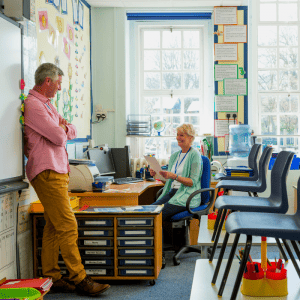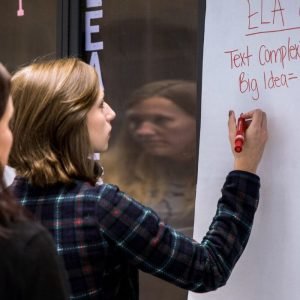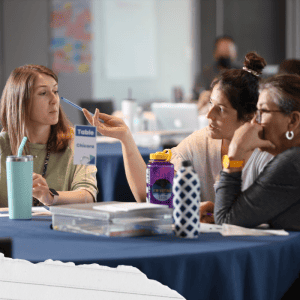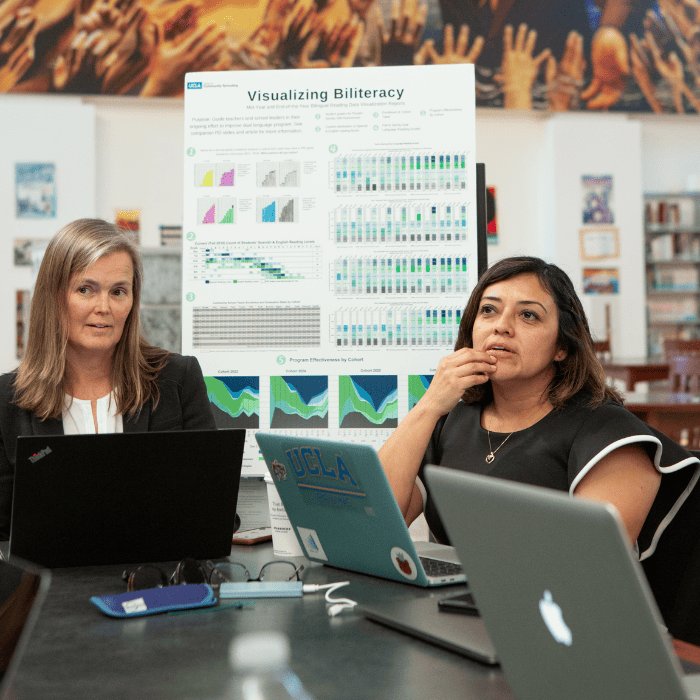
What should districts do next about the science of reading?
01/19/2024

Moving from Conversation to Systemic Action
A seismic shift has been underway in education—one that has the potential to reshape the way we teach children the fundamental skill of reading. The science of reading movement is gaining momentum across the United States, challenging traditional approaches to reading instruction and sparking a nationwide conversation on evidence-based methodologies.
The science of reading is the convergence of evidence on what matters and what works in literacy instruction, including the need for explicit, systematic phonics instruction. The findings involve research from various fields, including brain science, and emphasize how the brain processes letters and sounds. This approach, which includes how sounds, or phonemes, come together to make words, aims to ensure students understand the structure of language rather than relying on memorization.
More than 30 states now have mandates for evidence-based reading instruction, and school systems will need to adjust fast. So, what should school and system leaders do next to help educators make the shift and get evidence-based practices in front of students as quickly as possible? Let’s dive in.
Table Setting: A Quick Primer on the Science of Reading
Despite decades of education reform efforts, a troubling fact remains: in 2019, only 35% of fourth graders met the standards for reading proficiency set by the National Assessment of Educational Progress. These numbers have significant implications for the lives of children, particularly those from Black, brown, and low-income communities. Proficiency in reading by the end of third grade has been identified as a critical milestone, as those who fall short are four times more likely to drop out of school. Therein lies the push for evidence-based reading reforms.
Understanding the science of reading is not just about decoding words but decoding the path to a brighter future for our children. To truly grasp its significance, let’s trace our steps through history:
The so-called “reading wars,” clashes of people arguing for whole language versus phonics, saw a compromise in the form of “balanced literacy.” Yet, recent momentum has brought the five pillars of literacy back to the forefront, with specific attention to phonemic awareness and phonics instruction.
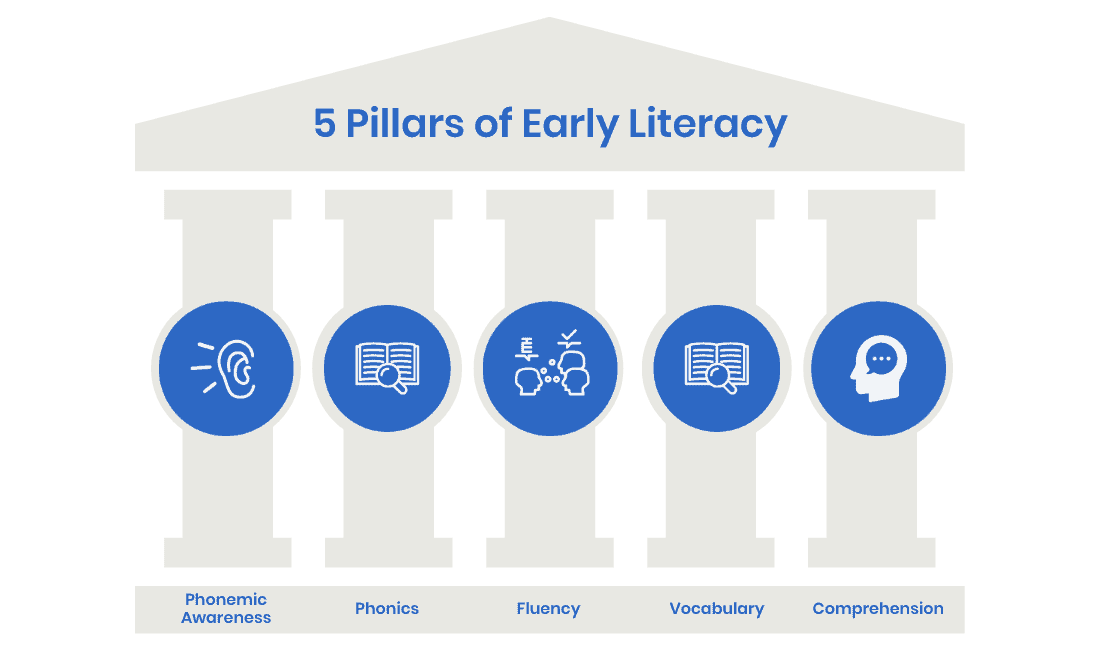 The significance of the science of reading is underscored by its effectiveness for struggling readers, constituting 30-40% of students. The push for this method is driven by parents, particularly those of children with dyslexia, who increasingly recognize this as a civil rights issue. Legislation in 33 states now addresses dyslexia and mandates screening and teacher training based on effective strategies.
The significance of the science of reading is underscored by its effectiveness for struggling readers, constituting 30-40% of students. The push for this method is driven by parents, particularly those of children with dyslexia, who increasingly recognize this as a civil rights issue. Legislation in 33 states now addresses dyslexia and mandates screening and teacher training based on effective strategies.
What Does This Shift Mean for Educators?
The science of reading is a vast, interdisciplinary body of research about how proficient reading and writing develop, why some students have difficulty, and how teachers can most effectively assess and teach.

Few teachers are initially trained in evidence-based reading instruction during their teacher preparation programs. Hence, educators unknowingly enter the classroom well-intentioned but inadequately prepared to teach kids to read.
When teachers get professional learning, it’s often limited to one-time workshops that prioritize materials over aiding teachers in building content understanding and connecting concepts to using the curriculum.
Heather Zuerblis, Director of Content and Coaching for our science of reading partnership with Baltimore City Public Schools, shares:
The biggest thing I’ve noticed over the years is that many professional learning sessions were heavily concentrated on the nuts and bolts of the curriculum. However, there seemed to be less emphasis on helping people grasp the underlying concepts and connecting them to the curriculum.”
That brings us to the present moment. What would better support that actually works look like? We don’t have to guess or imagine because it’s happening now in Baltimore.
How Leading Educators is Helping Baltimore City Public Schools Bring the Science of Reading to Life
 Leaders and educators in Baltimore City Public Schools (City Schools) want their nearly 76,000 students to develop the knowledge and skills they need to pursue the future that calls them. Recognizing that nearly two-thirds of students struggle with reading, City Schools is making significant investments in bringing the science of reading to life. This includes partnering with Leading Educators to provide systemic professional learning and a new fellowship for teachers.
Leaders and educators in Baltimore City Public Schools (City Schools) want their nearly 76,000 students to develop the knowledge and skills they need to pursue the future that calls them. Recognizing that nearly two-thirds of students struggle with reading, City Schools is making significant investments in bringing the science of reading to life. This includes partnering with Leading Educators to provide systemic professional learning and a new fellowship for teachers.
Leveraging a Maryland LEADS grant, City Schools launched a science of reading Fellowship with Leading Educators supporting the scoping, design, and initial facilitation. This fellowship focuses on two pathways: one for teachers, where participants receive ongoing professional development and coaching, and another for facilitators of adult learning. Additionally, Leading Educators is designing systemic professional development for all K-5 teachers in the district, grounded in the five pillars of reading.
Improving Classroom Practice
Baltimore City Schools have created a cohesive arc of learning (pictured below), with ongoing coaching to ensure that systemic professional development translates into improved classroom practices. For example, at the most recent professional learning, teachers worked on maximizing spoken language opportunities.
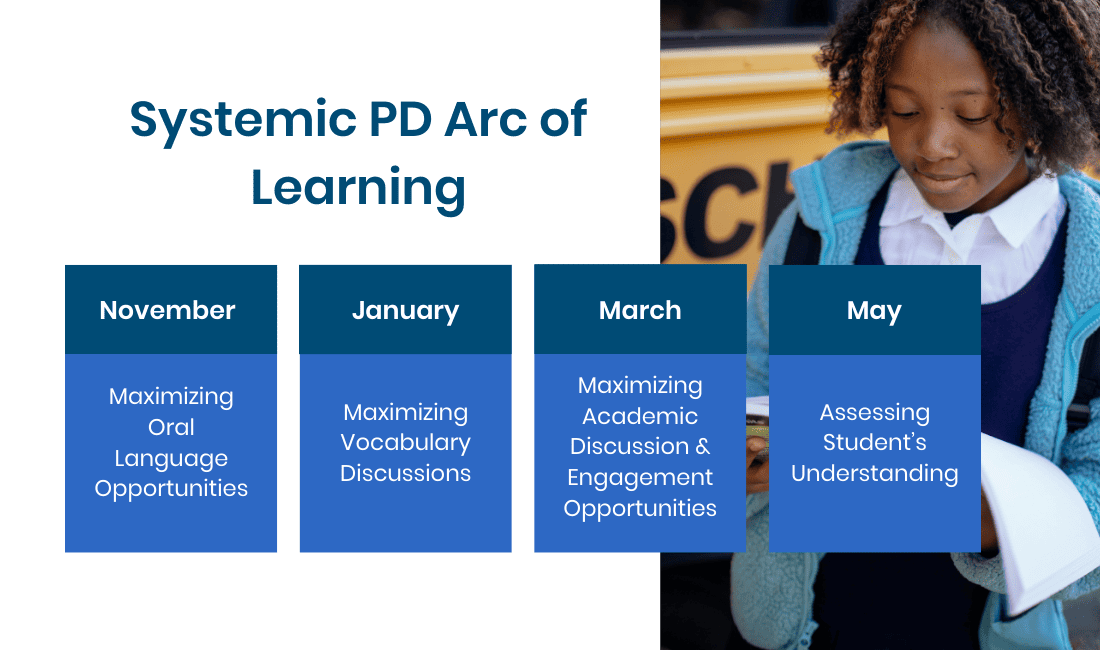
The district’s investment in literacy coaching and its commitment to leveraging high-quality curricular resources demonstrate its determination to address the literacy challenge. Teachers feel it’s paying off. One participant shares:
We had very rich conversations about phonics and fluency instruction. Listening to best practices is always valuable. We also left with new strategies and activity ideas to help us hone in on the specific needs of our students.”
Self-Assess
If you’re feeling a sense of unease about shifting to evidence-based literacy, you are not alone. Much of this is new knowledge for everyone, and it is common to feel a tension between making necessary shifts and managing the change for your people.
As you weigh your next moves, consider:
- As a system leader, how can you build your content knowledge and understanding to model continuous learning?
- What support or professional development do school leaders need to take on an instructional leadership role in this area? If not school leaders, who else can lean in?
- How can you address potential tensions due to gaps in knowledge?
- How equipped is your professional development approach to offer ongoing practice, shared learning, and application of new skills?
- How are you attending to teachers’ emotions and professional identities as they reflect on what they’ve done previously and internalize what needs to change?
Ready to get all students to grade level and beyond? We can help you take your next step.




